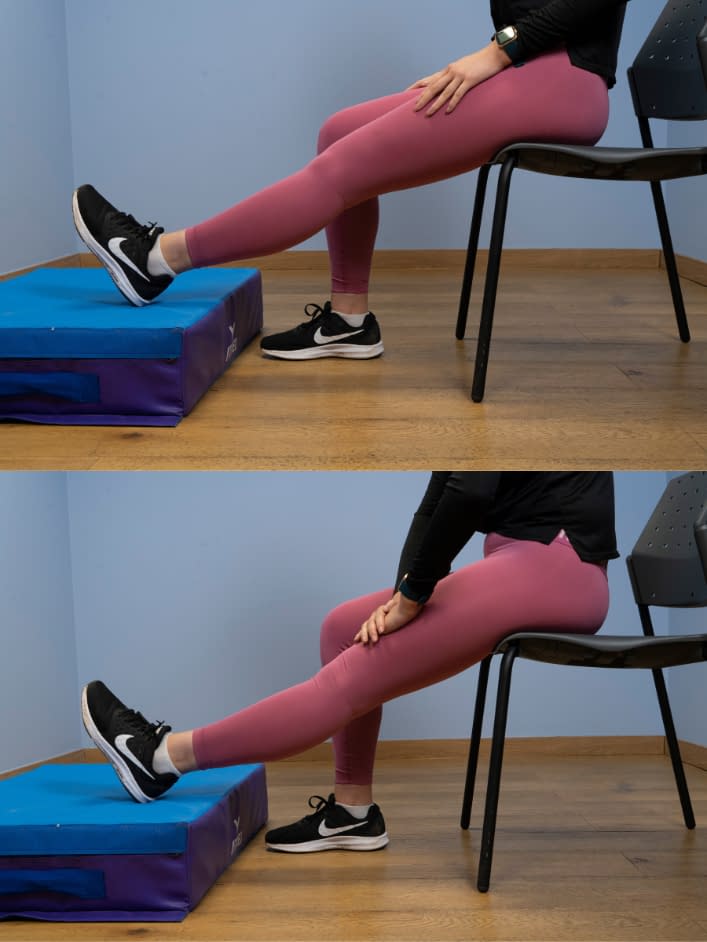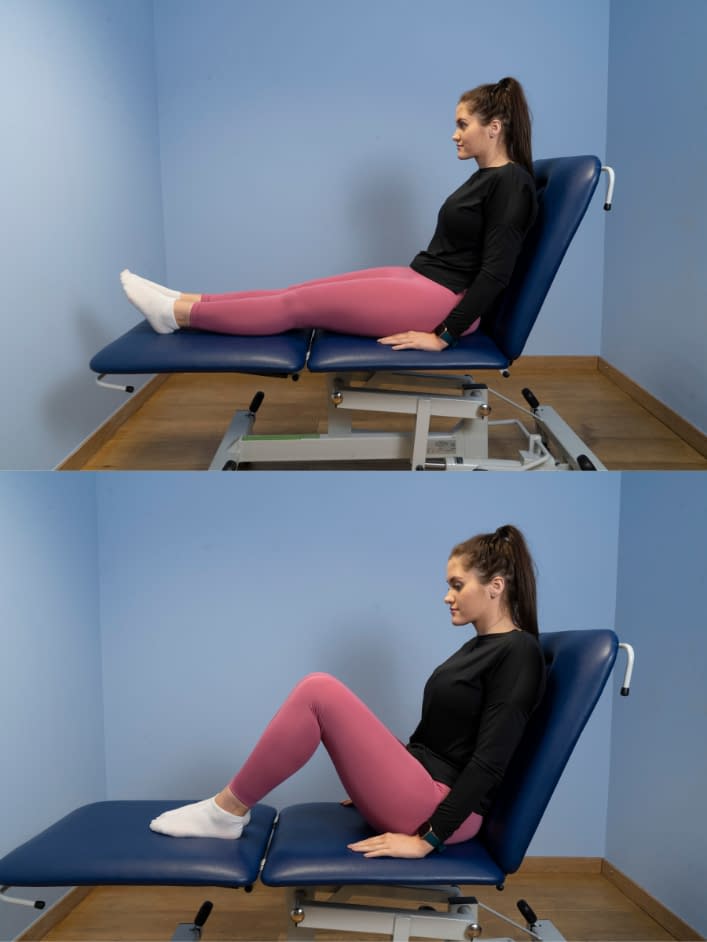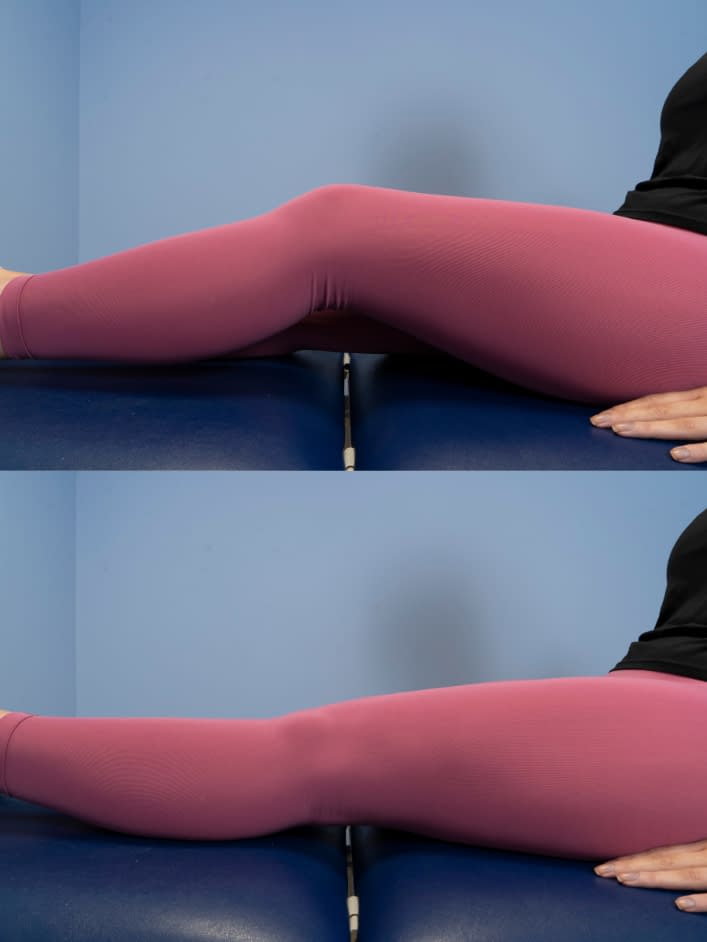Knee Replacement Surgery Early Exercise Programme
Aim to perform this programme a minimum of once per day unless prescribed otherwise. As with any new exercise, start slowly (repetitions as able) and build up as you are able within the guidelines below.
Pain should not exceed 4/10 whilst completing this exercise programme.
1. Heel hang
- Lay flat on your back or sit supported upright with the affected leg out straight and the heel place on a raised surface.
- Try to relax the leg as much as possible and allow the knee to gently move towards full knee extension.
- Pain levels should be manageable.
- To help provide a slight overpressure to the stretch and where appropriate, a small weight can be placed just above the knee.
2. Heel slide
- Lay flat on your back or sit supported upright with the legs out straight on a flat, smooth surface – preferably wearing socks to reduce friction.
- Slowly slide your heel along the surface up towards you by bending the knee, ensuring your knee remains in line with the hip and ankle.
- Bring the heel as close to the hip as possible.
- After a 2 second hold, begin straightening the knee by sliding the heel away from you.
3. Inner range quads
- Lay flat on your back or sit supported upright with the legs out straight.
- Position a pillow/rolled up towel under the knee to support it in a slightly bent position.
- Push the back of your knee down into the towel/pillow by tightening the muscles at the front of your thigh – your heel may come off the floor.
- Hold the squeeze with moderate pressure for 10 seconds before gently releasing the pressure.
We recommend consulting a musculoskeletal physiotherapist to ensure exercises are best suited to your recovery. If you are carrying out an exercise regime without consulting a healthcare professional, you do so at your own risk. If you have any concerns whilst completing these exercises, please contact a healthcare professional.
More Plans
Here our focus becomes regaining strength in the hips and legs. It is expected that you would be carrying on some of the movement-based exercises from the early programme and add in these exercises. Pain should not exceed 4/10 on your self-perceived pain scale whilst completing this exercise programme.
- 0
- 1
- 2
- 3
- 4
- 5
- 6
- 7
- 8
- 910
In this plan, the exercises increase in difficulty as well as becoming more functional (whole-body) movements. Pain should not be any greater, but we would expect some increase in fatigue when performing these exercises Pain should not exceed 4/10 on your self-perceived pain scale whilst completing this exercise programme.
- 0
- 1
- 2
- 3
- 4
- 5
- 6
- 7
- 8
- 910


